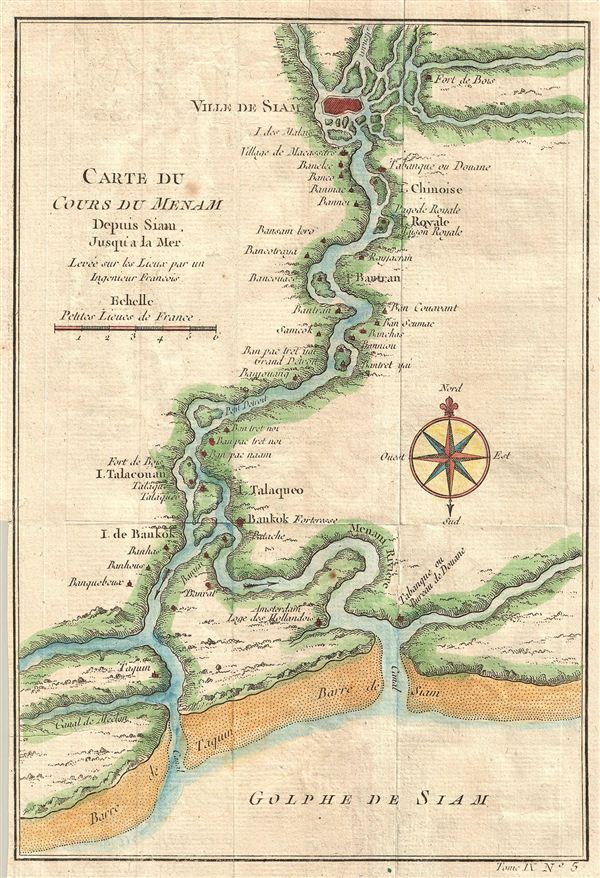This item has been sold, but you can get on the Waitlist to be notified if another example becomes available, or purchase a digital scan.
1749 Bellin Map of Siam and Bangkok, Thailand
Bangkok-bellin-1749
Title
c. 1750 (undated) 9 x 6 in (22.86 x 15.24 cm)
Description
At the time this map was made, Ayutthaya was one of the most prosperous cities in east Asia, and possibly the largest city in the world, with close to 1 million inhabitants. Trade flourished with the Dutch, French, Chinese and Japanese, with influence spanning from the Malay Peninsula, the Andaman ports of present day Myanmar, the Angkor kingdom of Cambodia, to northern Thailand. Ayutthaya's power declined in the 1700s due to infighting among princes and officials.
The powerful Kingdom of Burma (Myanmar) began a war with the Thai's of Ayutthaya in the 1750s, and in 1767 broke through the walls, sacked the city and burned it to the ground. The royal family fled, its king dying of starvation in hiding just ten days later. Two years later, the Thai commander, General Taksin, would reunite the Thai kingdom, vanquish the Burmese, and establish a new seat of power to the south: Bangkok.
Drawn by Jacques Nicolas Bellin and published as plate no. 5 in volume 9 of the 1752 French edition of Abbe Provost's L'Histoire Generale des Voyages.
Cartographer
Jacques-Nicolas Bellin (1703 - March 21, 1772) was one of the most important cartographers of the 18th century. With a career spanning some 50 years, Bellin is best understood as geographe de cabinet and transitional mapmaker spanning the gap between 18th and early-19th century cartographic styles. His long career as Hydrographer and Ingénieur Hydrographe at the French Dépôt des cartes et plans de la Marine resulted in hundreds of high quality nautical charts of practically everywhere in the world. A true child of the Enlightenment Era, Bellin's work focuses on function and accuracy tending in the process to be less decorative than the earlier 17th and 18th century cartographic work. Unlike many of his contemporaries, Bellin was always careful to cite his references and his scholarly corpus consists of over 1400 articles on geography prepared for Diderot's Encyclopedie. Bellin, despite his extraordinary success, may not have enjoyed his work, which is described as "long, unpleasant, and hard." In addition to numerous maps and charts published during his lifetime, many of Bellin's maps were updated (or not) and published posthumously. He was succeeded as Ingénieur Hydrographe by his student, also a prolific and influential cartographer, Rigobert Bonne. More by this mapmaker...

